Romain Fara
Polarization-Based Reconfigurable Tags for Robust Ambient Backscatter Communications
Nov 02, 2021



Abstract:Ambient backscatter communication is an emerging and promising low-energy technology for the Internet of Things. In such a system, a tag sends a binary message to a reader by backscattering a radio frequency signal generated by an ambient source. The tag can operate without battery and without generating additional radio waves. However, the tag-to-reader link suffers from the source-to-reader interference. In this paper, we propose a polarization-based reconfigurable antenna in order to improve the robustness of the tag-to-reader link against the source-to-reader direct interference. More precisely, we compare different types of tags' antennas, different tags' encoding schemes, and different detectors at the reader. By using analysis, numerical simulations, and experiments, we show that a polarization-based reconfigurable tag with four polarization directions significantly outperforms a non-reconfigurable tag, and provides almost the same performance as an ideal reconfigurable tag with a large number of reconfigurable polarization patterns.
First experimental evaluation of ambient backscatter communications with massive MIMO reader
Nov 02, 2021



Abstract:Ambient backscatter communications have been introduced as low-power communications for green networking. This technology is very promising as it recycles ambient radio frequency waves, however such systems have limitations and suffer from poor performance due to their low-power. In this paper, we present and evaluate the performance of an ambient backscatter system equipped with a massive multiple input multiple output (MIMO) antenna at the reader side. A mobile device transmits a signal that is backscattered by a tag and received by the reader. Thanks to the spatial diversity of the massive MIMO antenna, the reader is able to identify, for each received signal, the state of the tag (backscattering or transparent) that corresponds to a bit of the tag message. First, we experimentally determine the channel between the device and the reader for two states of the tag. Then using a minimum mean square error algorithm we evaluate the performance of the ambient backscatter communication. We demonstrate that the performance of the ambient backscatter system is significantly improved by the massive MIMO reader.
Robust Ambient Backscatter Communications with Polarization Reconfigurable Tags
Nov 02, 2021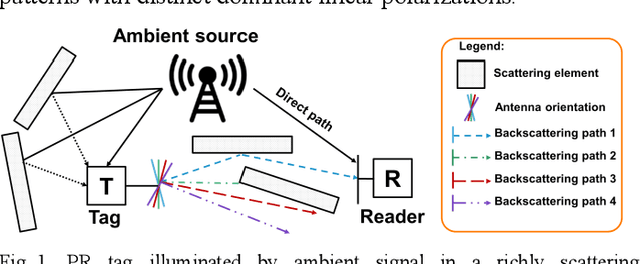
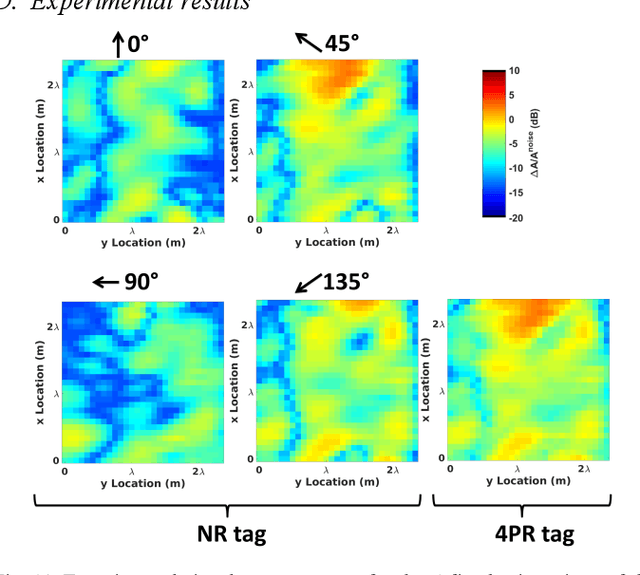
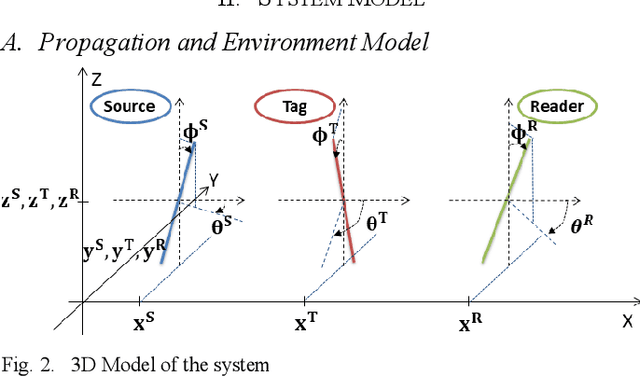
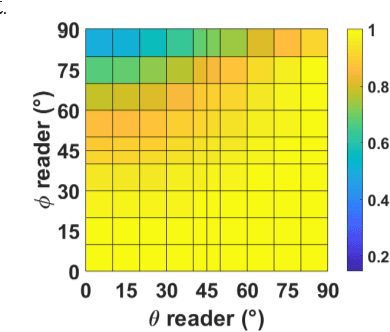
Abstract:Ambient backscatter communication system is an emerging and promising low-energy technology for Internet of Things. In such system, a device named tag, sends a binary message to a reader by backscattering a radio frequency signal generated by an ambient source. Such tag can operate without battery and without generating additional wave. However, the tag-to-reader link suffers from the source-to-reader direct interference. In this paper, for the first time, we propose to exploit a "polarization reconfigurable" antenna to improve robustness of the tag-to-reader link against the source-to-reader direct interference. Our proposed new tag sends its message by backscattering as an usual tag. However, it repeats its message several times, with a different radiation pattern and polarization, each time. We expect one polarization pattern to be better detected by the reader. We show by simulations and experiments, in line-of-sight and in richly scattering environment, that a polarization reconfigurable tag limited to 4 polarization directions outperforms a nonreconfigurable tag and nearly equals an ideally reconfigurable tag in performance.
A Prototype of Reconfigurable Intelligent Surface with Continuous Control of the Reflection Phase
May 25, 2021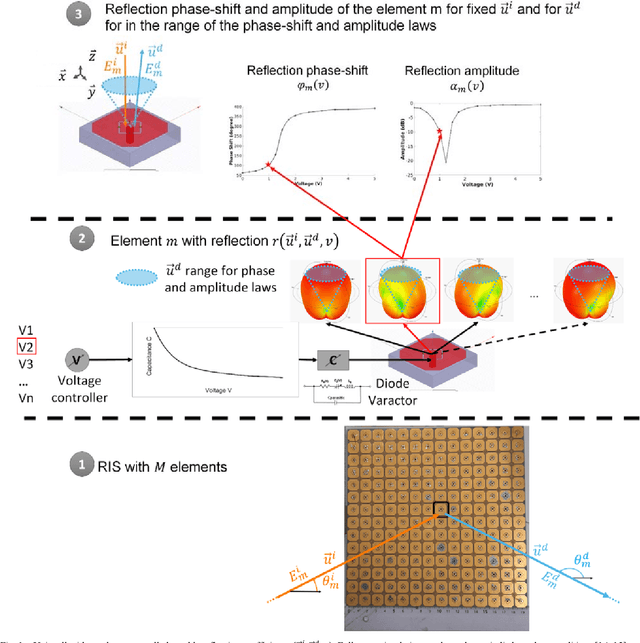
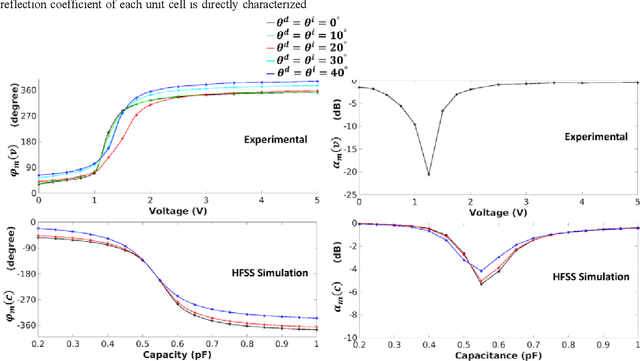
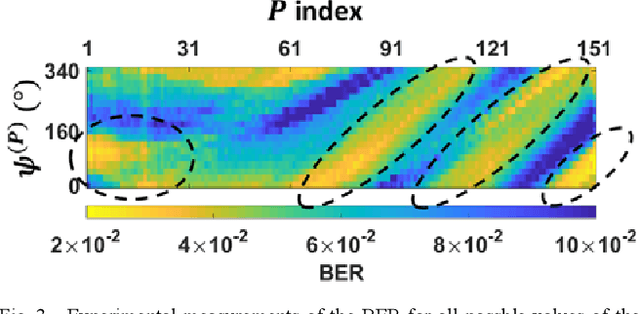
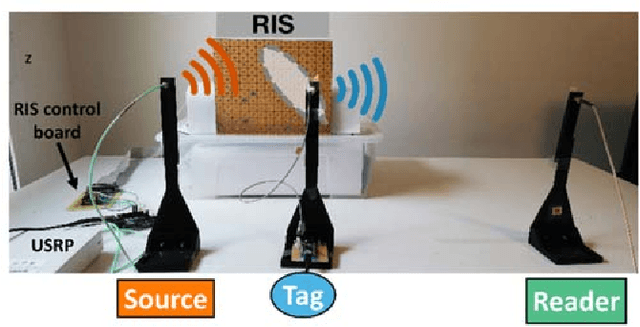
Abstract:With the development of the next generation of mobile networks, new research challenges have emerged, and new technologies have been proposed to face them. On the one hand, the reconfigurable intelligent surface (RIS) technology is being investigated for partially controlling the wireless channels. The RIS is a promising technology for improving the signal quality by controlling the scattering of the electromagnetic waves in a nearly passive manner. On the other hand, ambient backscatter communications (AmBC) is another promising technology that is tailored for addressing the energy efficiency requirements for the Internet of Things (IoT). This technique enables low-power communications by backscattering ambient signals and, thus, reusing existing electromagnetic waves for communications. RIS technology can be utilized in the context of AmBC for improving the system performance. In this paper, we report a prototype of an RIS that offers the capability of controlling the phase shift of the reflected waves in a continuous manner, and we characterize its characteristics by using full-wave simulations and through experimental measurements. Specifically, we introduce a phase shift model for predicting the signal reflected by the RIS prototype. We apply the proposed model for optimizing an RISassisted AmBC system and we demonstrate that the use of an RIS can significantly improve the system performance.
Reconfigurable Intelligent Surface -Assisted Ambient Backscatter Communications -- Experimental Assessment
Apr 07, 2021

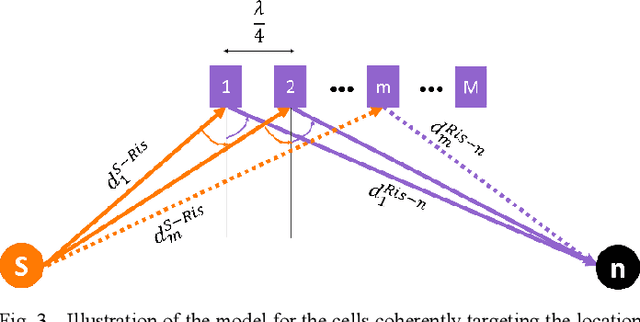

Abstract:Sixth generation (6G) mobile networks may include new passive technologies, such as ambient backscatter communication or the use of reconfigurable intelligent surfaces, to avoid the emission of waves and the corresponding energy consumption. On the one hand, a reconfigurable intelligent surface improves the network performance by adding electronically controlled reflected paths in the radio propagation channel. On the other hand, in an ambient backscatter system, a device, named tag, communicates towards a reader by backscattering the waves of an ambient source (such as a TV tower). However, the tag's backscattered signal is weak and strongly interfered by the direct signal from the ambient source. In this paper, we propose a new reconfigurable intelligent surface assisted ambient backscatter system. The proposed surface allows to control the reflection of an incident wave coming from the exact source location towards the tag and reader locations (creating hot spots at their locations), thanks to passive reflected beams from a predefined codebook. A common phase-shift can also be applied to the beam. Thanks to these features, we demonstrate experimentally that the performance of ambient backscatter communications can be significantly improved.
 Add to Chrome
Add to Chrome Add to Firefox
Add to Firefox Add to Edge
Add to Edge